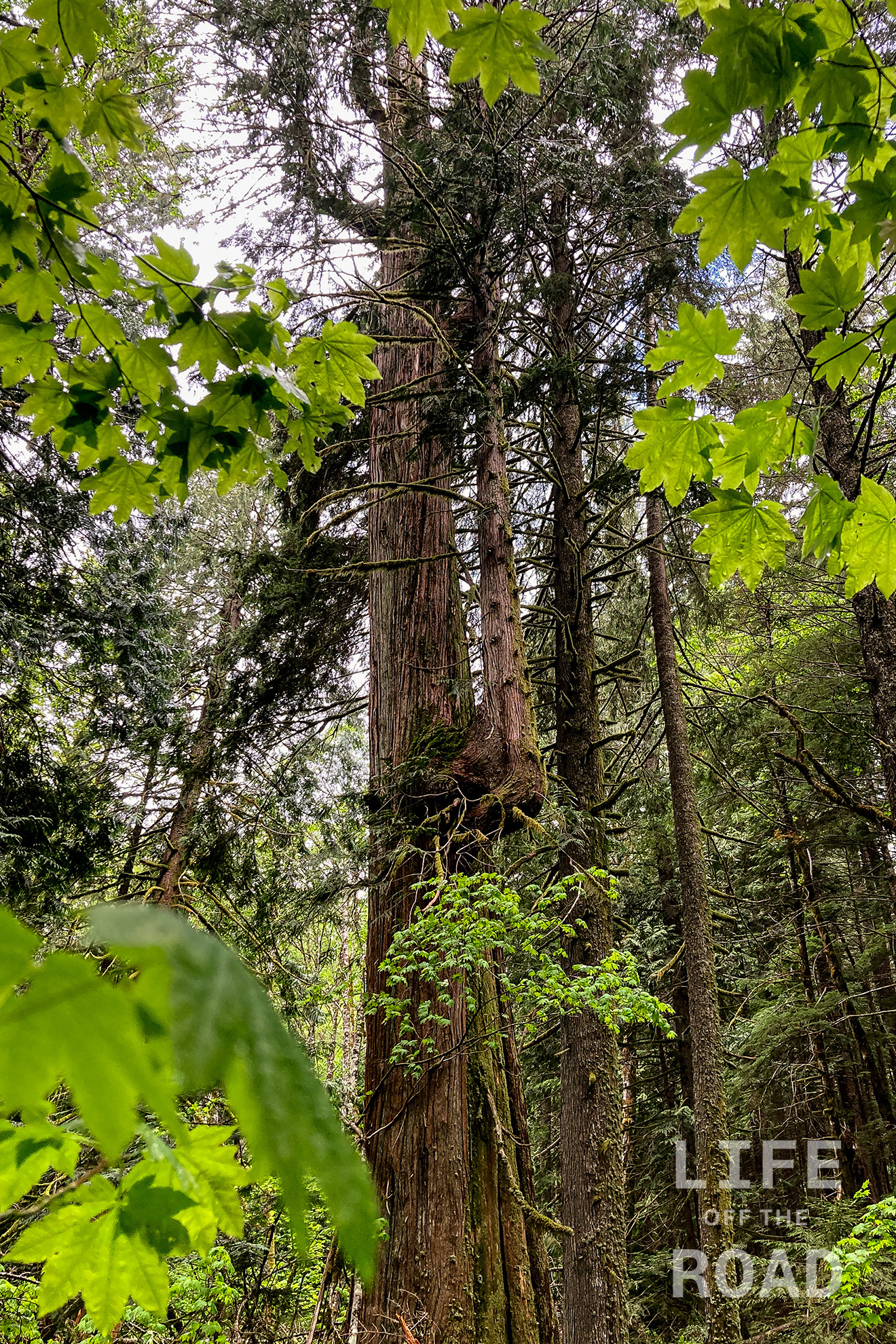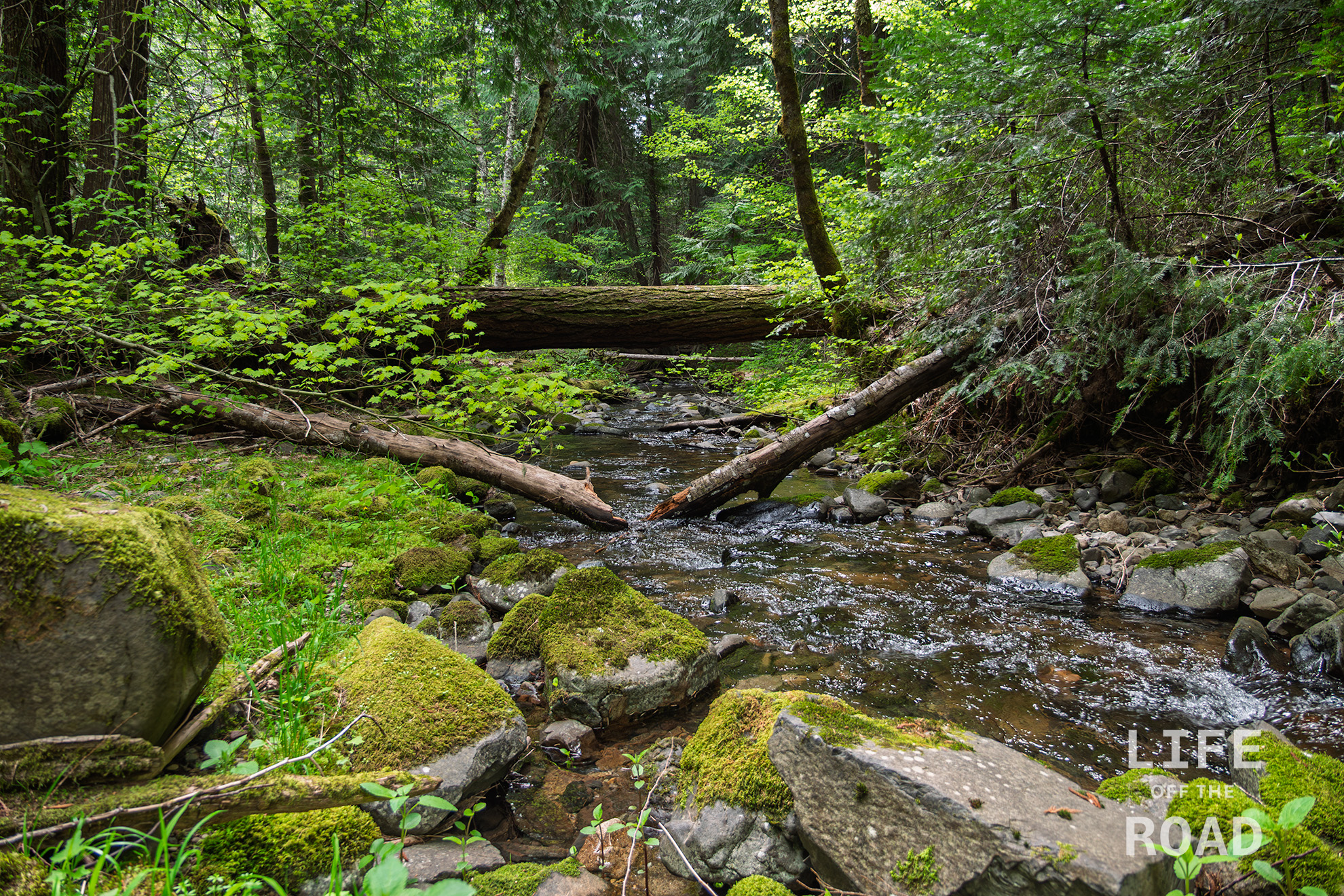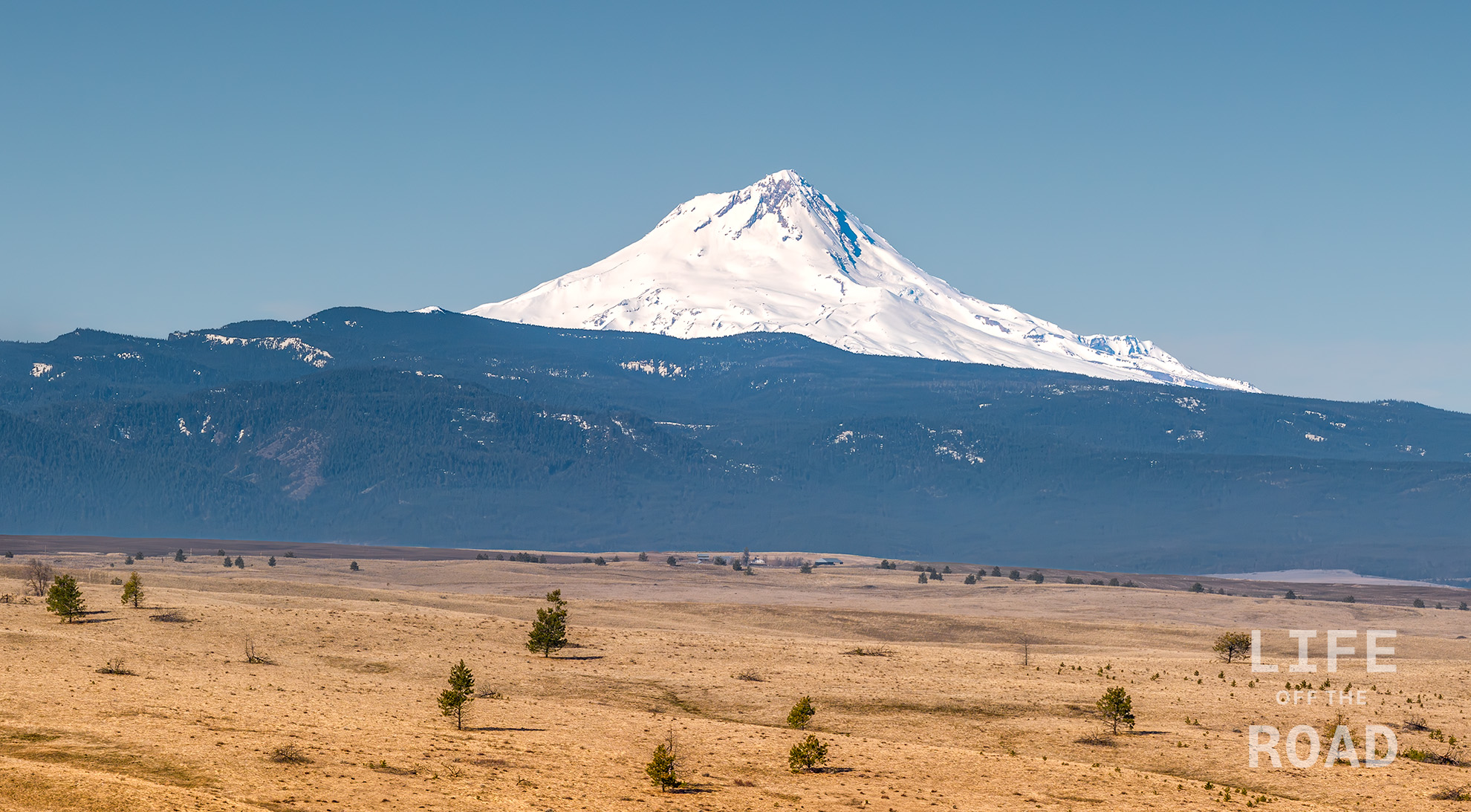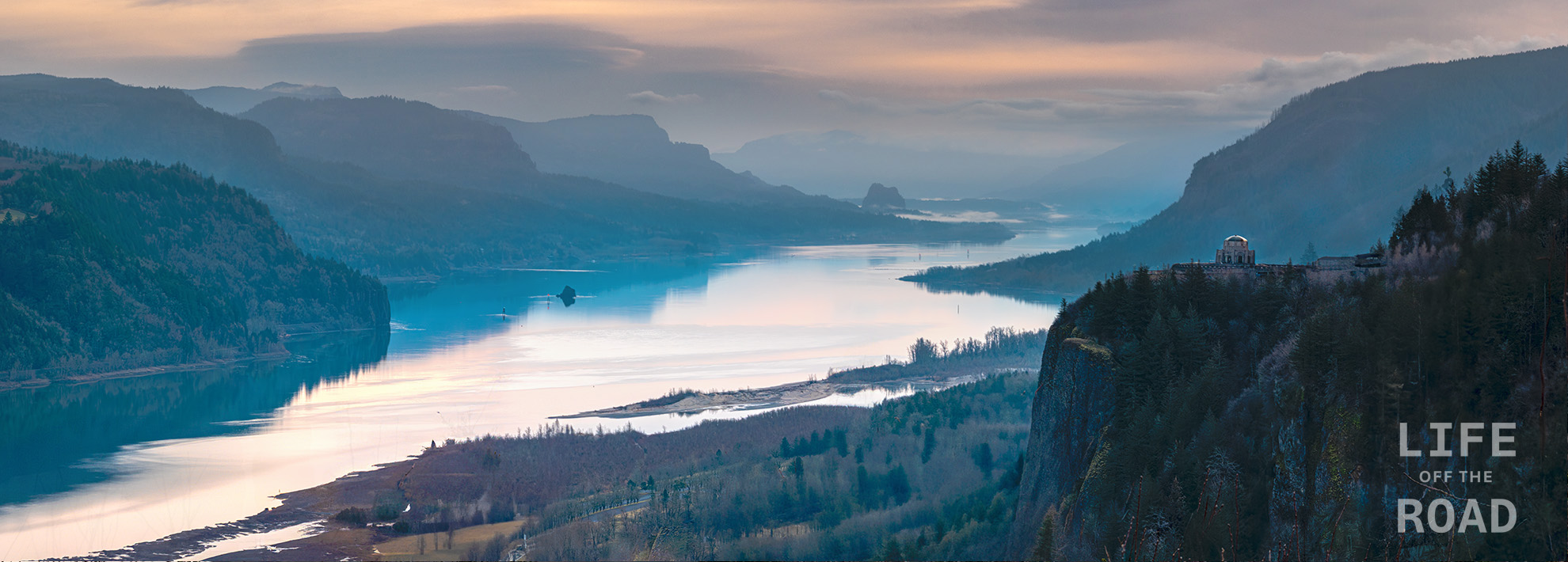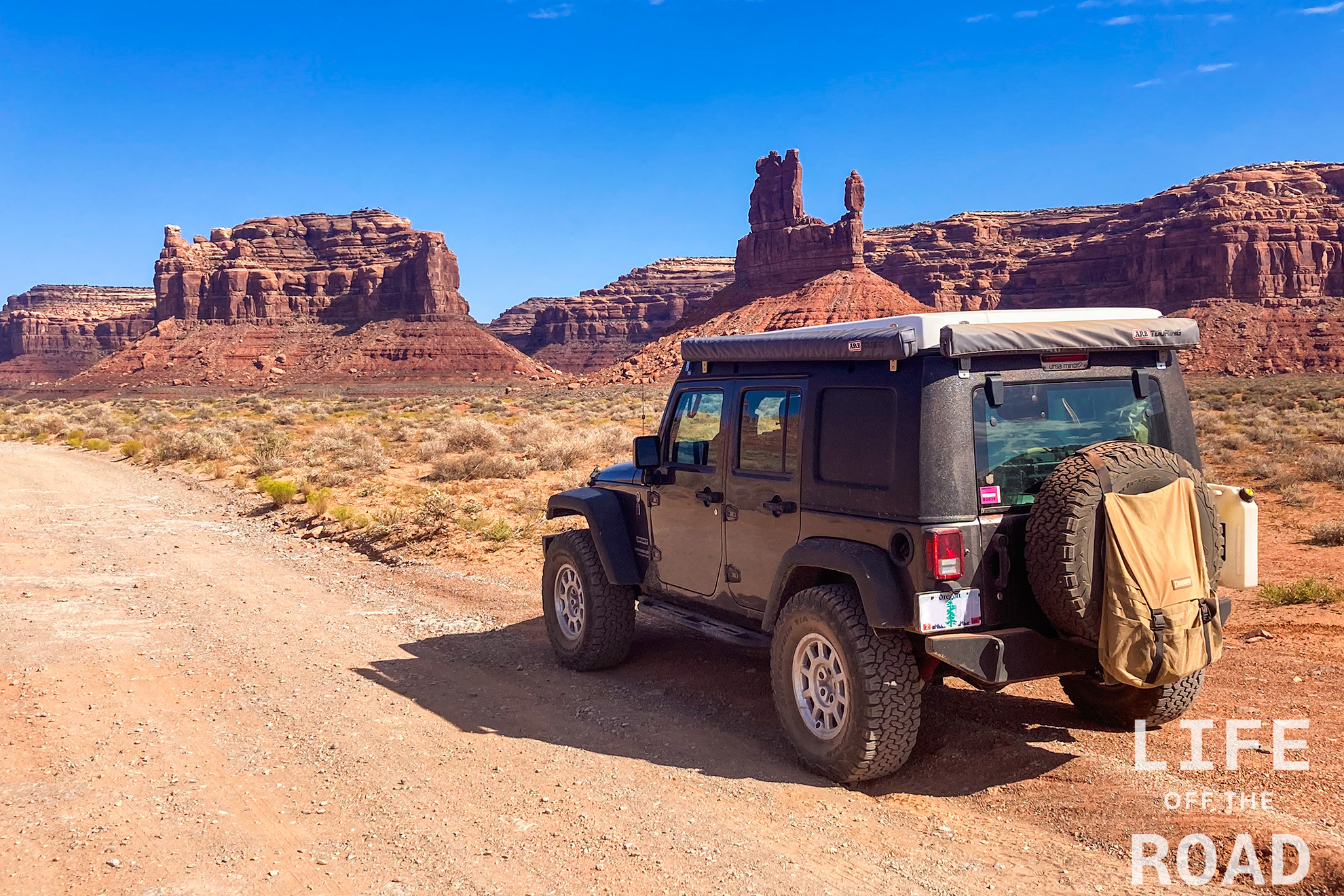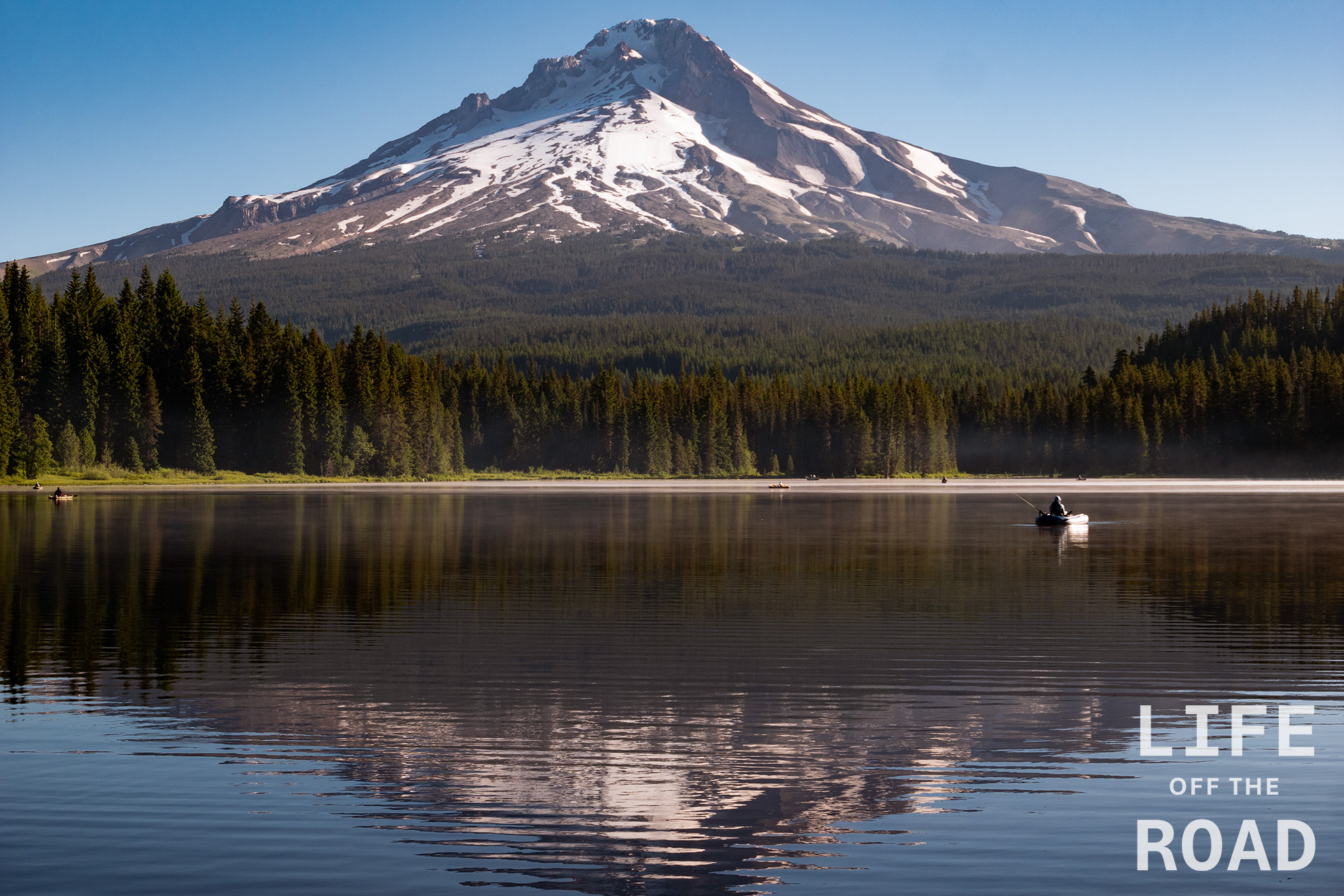I recently stumbled on a 2015 newspaper article about a 170-acre section of old-growth timber semi-secured away along a tiny, secondary tributary in the Gifford Pinchot National Forest, called Lost Creek. There is old-growth timber in at least several places, in Gifford Pinchot. This past winter I hiked the Lewis River Trail which had a plethora of old-growth fir and cedar along the route, including a monster Douglas Fir between the middle and upper falls that rivaled the ones I could find on this trip. Old growth timber is fairly rare in northwest Oregon due to logging (of course) and forest fires, like the Tillamook Burn. These trees do not grow forever, though, and there is a massive fir tree along Lost Creek that is dead, with huge carvings of bark falling off around the tree, onto the ground. This area, like many along the creek with leaning trees propped-up by others, are somewhat dangerous and should be respected.

Unlike Lewis River, Cedar Flats, or several other well-publicized locations of old-growth trees, the stand along Lost Creek has a much more remote and primitive feeling. It is still the Pacific Northwest with all of its moss and decay, but there is a “lost in time” feeling when traveling through the area, which I do not think was just my imagination. It is part of the fascination with this area, and not one that I felt while hiking along the Lewis River – even though some of the trees were just as spectacular. This area along Lost Creek is old and untouched, and you can feel it.

This was my second outing to Lost Creek, the first time being on the south-side of the creek. To be honest, I am probably going to go back, just because it is such an untouched and remote place. Ironically, the Washington Backcountry Discovery Route runs right by it, but there is nothing to make you think there might be something more lurking off in the woods. Perhaps you might see a Toyota Prius parked there, on this fairly pot-holed and rough logging road. There was one parked there, last Sunday.
